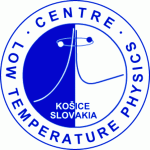Research

Superconductivity
In the Center, there are many different aspects of superconductivity addressed. Research performed here brought various interesting discoveries and helped to deepen understanding of trivial as well as nontrivial features of diverse superconducting systems. Just to mention a few – we brought the first experimental evidence of the two-gap superconductivity in MgB2 and confirmed existence of the two gaps also in pnictides and NbS2. On the other hand we showed that in some systems the experimental results of other groups were misinterpreted claiming multi-gap superconductivity in materials that are intrinsically single-gap superconductors (Mo8Ga41; CuTixSe2; Bi2Pd,…). We found bulk Ising superconductivity in transition metal dichalcogenides, we studied in details interplay of superconductivity with other order parameters (charge density waves, pair density waves, ferromagnetism) or at the edge of superconductor-insulator transition. And much more.
For more information follow the link below.Strongly correlated systems
Behaviour of strongly correlated systems materials is hard to describe theoretically because strong interactions between particles produce phenomena that cannot be predicted by studying the behaviour of individual particles alone. In case of magnetic systems, low temperature interactions like the Kondo effect can screen magnetic moments of certain materials (e.g., those containing some lanthanoids and actinoids), resulting in a loss of degrees of freedom. The system can compensate this loss by forming a narrow density of states structure right at the Fermi energy. This many body resonance gives rise to a variety of exciting low temperature properties such as Fermi- and non-Fermi liquid, heavy fermion behaviour, intermediate valence or heavy fermion superconductivity. By means of measurements at very low temperatures (mK), at high magnetic fields (H > 10 T) and hydrostatic pressure, it is possible to derive the most important interaction mechanisms and establish the relevant phase diagrams. The team from CLTP has long standing experience of study strongly correlated electron systems e.g. SmB6 [P. Hlawenka et al. Nature Comm. 9 (2018), 517] and TmB4[Mat. Orendáč et al., Scientific rep. 8 (2018) 10933].
Superfluid 3He physics
Superfluid 3He can serve as a perfect model system for experiments related to cosmology, astrophysics and particle/nuclear physics and other fields of physics. In one of our experiments, we probed the black- and white-hole horizon analogs in superfluid 3He-B using the spin-precession waves propagating on the background of the spin supercurrents between two mutually connected HPDs and provided the evidence of the white hole horizon formation for spin precession waves.
[1] M. Človečko, E. Gažo, M. Kupka, P. Skyba, Physical Review Letters 123, 161302 (2019)
In addition, we observed experimentally a NMR-like effect on an anisotropic magnetic moment of the surface Andreev bound states in topological superfluid 3He−B at zero temperature limit.
[2] M. Človečko, E. Gažo, M. Skyba, and P. Skyba, Phys. Rev. B 99, 104518 (2019)
One of our goals is to study the intriguing physical properties of various types of micro-, nano- and piezoelectric resonators in vacuum at temperatures below 1 K. We have shown that normalized resonance frequency of quartz tuning forks manifests a universal temperature dependence, which is independent of the magnetic field strength. This physical property makes the quartz tuning forks very promising low temperature thermometers in high magnetic fields in the temperature range below 1 K.
[3] M. Človečko, P. Skyba, Applied Physics Letters 115, 193507 (2019)